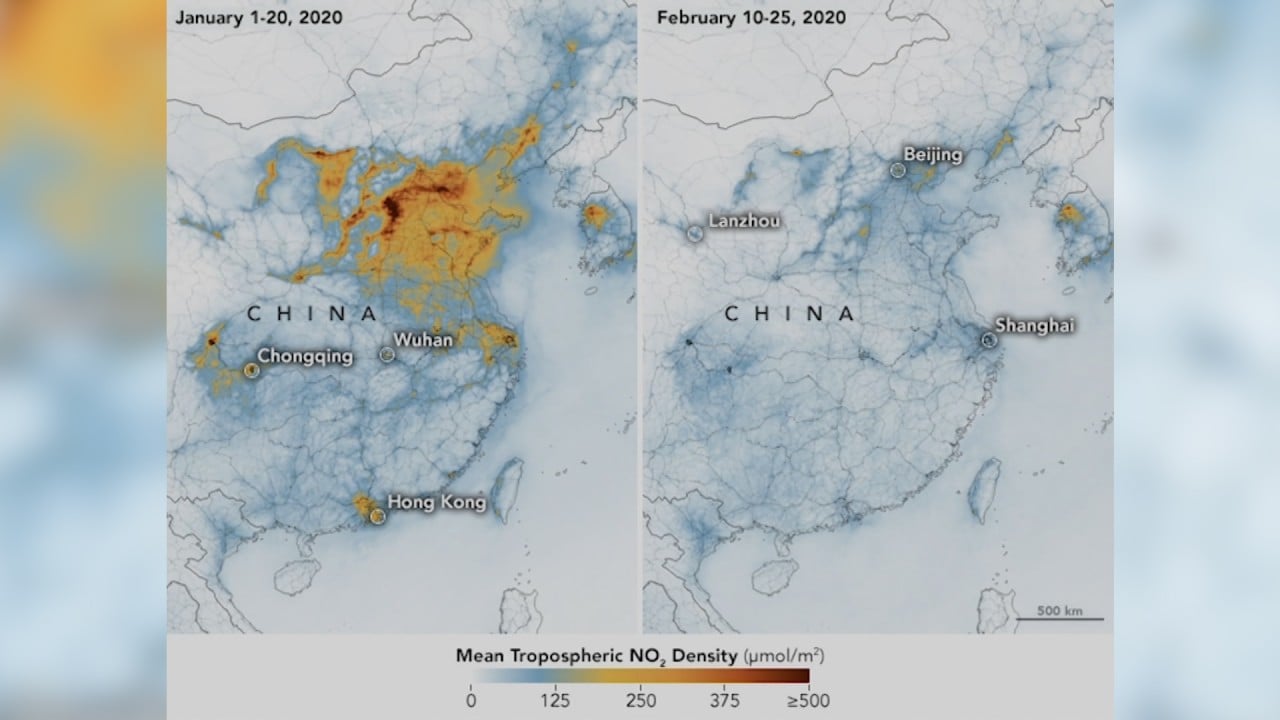
Is China reaching the limits of its air pollution control efforts?
- Strong winds come to the rescue in Beijing but eastern China is cloaked in smog
- The country has made big gains in air quality but weather conditions remain a factor in fluctuations, expert says
In the end, a cold wind from the northwest came to the rescue on Sunday, dispersing the worst pollution Beijing had seen so far this winter.
But eastern China remained blanketed in severe smog and haze, waiting for gusts to help clear the air.
In Beijing, for example, the average level in 2022 of especially harmful particulates called PM2.5 was down to one-third of that seen in 2013.
Environmentalist Ma Jun, from the Institute of Public and Environmental Affairs (IPE), said China’s decade-long efforts to improve air quality had paid off, with pollution from excessive emissions now a rarity.
“The current pollution surge is mainly due to unfavourable meteorological conditions such as high humidity, atmospheric stability, and temperature inversions, leading to poor atmospheric dispersion, and pollutants are confined to lower areas,” Ma said.
“Weather is playing an increasingly significant role in fluctuations in air quality in various regions.”
But industry and transport sectors in those regions still had significant emissions, meaning parts of the country still depended on favourable weather conditions such as strong winds to improve air quality.
China’s air quality conditions had not yet reached a turning point. “Relaxing pollution controls would be like rowing upstream – any pause would lead to regression,” he said.
In its “Blue Sky Roadmap” report released in 2022, the IPE, an independent non-profit organisation, documented the three steps the country took in the past decade to improve air quality.
China bans new steel plants in ‘blue skies’ plan to cut pollution
The first step, starting in 2013, was to establish a nationwide monitoring system over three years.
Environmental factors are a key part of performance reviews for local officials but in the past they were based on emission cuts, figures that could be manipulated. By monitoring and disclosing key parameters like PM2.5 and ozone, the central government could shift the focus from emission reduction figures to environmental quality indicators, which is far more difficult to distort or falsify.
The second step was to continuously improve pollution forecasting and alert capacity to enable schools and residents to take action to reduce exposure during severe pollution days. Local governments could also focus on emergency emissions reductions, enabling authorities to shut down less important factories temporarily to minimise emissions before pollution builds up.
The third step was to locate and cut down pollution at its source. This was achieved in part by introducing the world’s first real-time disclosure of online monitoring data, a system that discouraged falsified or misleading emissions reports by major companies. The central government also sent thousands of staff to the regions, targeting not just polluting factories but local environmental officials failing in their duties.
In 2015, when air quality monitoring began in 338 cities nationwide, only 73 cities met the air quality standards. By 2021, 218 cities – or about two-thirds of the total – complied.
But China’s journey to air pollution control is not over.
While national performance was generally good, PM2.5 concentrations in the three key regions of Beijing-Tianjin-Hebei, the Yangtze River Delta, and the Fen-Wei Plain had not improved in 2022.
That was the assessment of international NGO Clean Air Asia in a report released at the 2023 China Blue Sky Observation Forum, held in Beijing in October.
In fact, while the Yangtze River Delta remained unchanged, the other two regions saw concentrations increase.
Ma said that China’s overall air quality still deviated significantly from the guidelines set out by the World Health Organization (WHO), meaning it was essential to impose stricter air quality management targets.
“China’s emission reduction targets have become more refined. The ‘Continuous Improvement of Air Quality Action Plan’, launched this year, sets less aggressive goals but addresses more fundamental transformations that may synergise pollution control with carbon reductions,” he said.
Unlike before, many collaborative measures are now in place, combining industrial upgrades with fundamental emission reductions.
For example, in China’s steel industry, one of the country’s biggest air polluters, switching from coal-based blast furnace technology to electric furnaces can substantially reduce emissions. Combining those reductions with steel recycling can also curb carbon emissions.
Climate envoy says China has ‘done a lot’ on methane despite criticism of plan
In green transport, improving fuel quality, using qualified catalytic converters for vehicle exhaust, and promoting electric vehicles can mitigate emissions without affecting transport needs.
Aside from industrial upgrades and emission reductions, Ma said two other areas could be targeted for further improvement: updating air quality standards and improving pollution forecasts.
“China is still using the WHO’s 2012 transitional air quality standards. After years of management, maybe it’s time to establish higher standards through research and revision.”
As they face inevitable pollution, forecasting agencies should provide adequate warnings and advise the public on protective measures to minimise risks of exposure during smoggy days.
“While forecast accuracy can be improved, the public should also be made more aware of the Air Quality Health Index to better understand the hazards of polluted weather,” Ma added.



